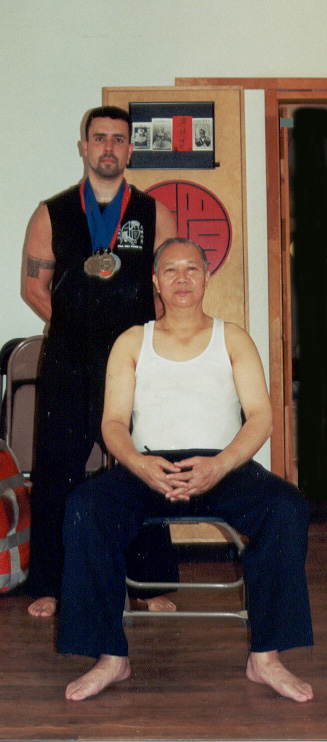IN MEMORY OF MY SIFU, MASTER KWONG MAN FONG . 1945-2015
Roughly sixteen years ago, I became disenchanted with the overly-commercialized kung fu school I was attending. It had all the bells and whistles you’d expect to see in a kung fu school; but the curriculum didn’t offer much beyond a decent workout.
Thus the hunt for real kung fu in New York City began…
I don’t mean to short-change any other schools in the area, but none that I visited seemed to have what I was looking for. It eventually reached the point to where I’d given up on Chinese martial arts; visited some Aikido schools, Kendo schools, even Capoeira schools… and made a final decision to begin training in Muay Thai.
I’d signed up for my trial class and was set to join. Then I heard about a White Eyebrow school in lower Manhattan. I’d read about the style, and didn’t know much about it beyond a few magazine articles and internet posts. I decided to stop by and watch a class. That was it all it took!
Sparring was intense. Workout was intense. People weren’t dancing around exhibiting superfluous, flowery movements like many other systems. In fact, it was the complete opposite. The style was brutal, fast, blunt and aggressive. No belts or satin sashes. No fancy uniforms. Just real, raw martial arts ——– exactly what I was looking for!
The day of my first [Saturday morning] class, I came home that afternoon, dropped on my couch and slept for about 4 hours. Total exhaustion. My mind was made up. This was the system to which I was ready to devote all of my efforts.
As time progressed, I would come to devote all of my loyalty; and eventually become a trusted member of the organization. And in 2005, I was accepted as a Todai (disciple) of Sifu Kwong Man Fong.
He was fair. He would teach anyone provided they had a willingness to learn; albeit advanced knowledge was only transmitted to those he trusted. That’s just how it usually is within the Chinese martial arts’ social infrastructure.
We were trained like pit bulls. Sparring sessions would sometimes get out of hand. But each injury would serve as a lesson-learned. We’d always emerge with valuable lessons. Plain and simple – this was to prepare us for reality. Sifu was without a doubt, a realist. And he knew exactly what was needed to produce an efficient fighter.
Our “full power” was never enough – always pushing us to push ourselves further than our own will would allow. When we would show improvement, we’d hear, “not bad” – the ultimate compliment. When we’d get worse or misunderstand, he would explain a few different ways – and if we still didn’t get it, we’d hear his laugh followed by, “not yet”.
On a very personal note, as a non-Chinese practitioner, after my Baai Si (discipleship ceremony), my Sifu treated me with absolute equality. He taught me the same way as the Chinese Todai. I don’t know if he’d ever known how much that meant to me, but I viewed it as a great blessing – a great honor. He could’ve spoken in Chinese for the whole class, translated nothing – and asked the other students not to translate certain things. But he went out of his way to speak English for my benefit — and what he didn’t know how to say in English, he would wait until my seniors would generously translate it for me.
Knowing and learning from Master Kwong Man Fong has been a profound experience – one that can never be replicated. To think that someone of his skill level, his lineage, and his accomplishments has passed down a system of kung fu to a once discipline-less troublemaker like myself is truly humbling.
I will be sure to honor, retain, and pass on his teachings.
He will be sorely missed.

Sifu Kwong Man Fong 1945-2015
